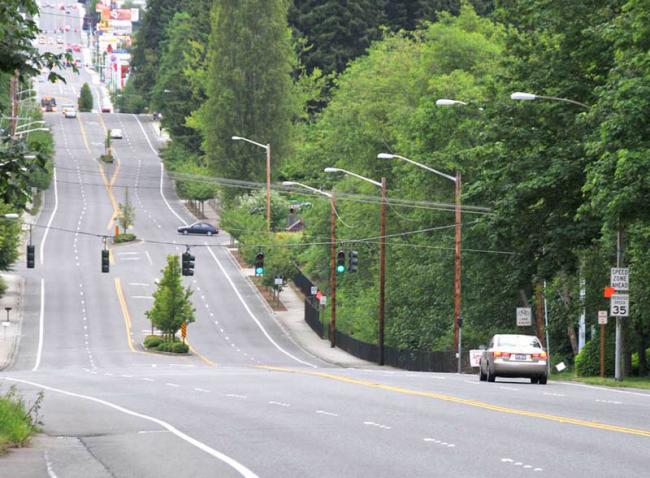Have you wondered why our local speed limits are so quirky?
Looking north from S 174th Street along 1st avenue S. toward Burien.
Mon, 06/07/2010
Wonder why speed limits are quirky from Burien to Des Moines along 1st avenue south?
The answer is a bit complicated. When the initial phase of the improvement project was completed from 160th St. to 174th St, the Normandy Park city planners learned that Normandy Park Assisted Living was submitting plans for expansion of their facilities along 164th St.
It made sense at the time to lower the 45 mph speed limit to 35 mph due to a concern for senior citizens in the area as well as continuing the 35 mph limit from further north in Burien.
The fact that the short stretch from 174th St. to SW Normandy Rd. is currently at 45 mph (that quirkiness we mentioned) has not gone unnoticed and is only there because the state has the jurisdiction on changes in speed limits. Yes, that stretch of roadway from 174th thru to Des Moines and beyond is considered part of SR 509 according to Barbara Briggs of the state DOT.
Adding to the quirkiness is that the construction from 192nd St to 200th St. needs to be completed before the state will conduct a study to determine the most sensible speed limit from Burien to Des Moines. Hence the reason for the short stretch of higher speed south of 174th St. to SW Normandy Rd.
Ed Conyers, state DOT spokesman said the project is over due. The end of July is the new target date for completion according to Doug Schulze, Normandy Park city manager. The city oversees the project but the state has final say on posted speed limits.
The city of Normandy Park defers to the state DOT for speed limit controls and signage on state routes. It means leaving the 45 mph speed limit up to Manhattan Village heading south until at least August when the entire project will be completed, then waiting for the state to conduct a study of the entire roadway before determining the safest speed limits along that corridor.
"That won't take too long", Briggs said. They measure traffic for 24 hours over several days to give them an idea of what 85% of the traffic is capable of negotiating the roadway safely. The 15% are slower and faster drivers during that period of time. They then determine the safest speed and post that limit.


